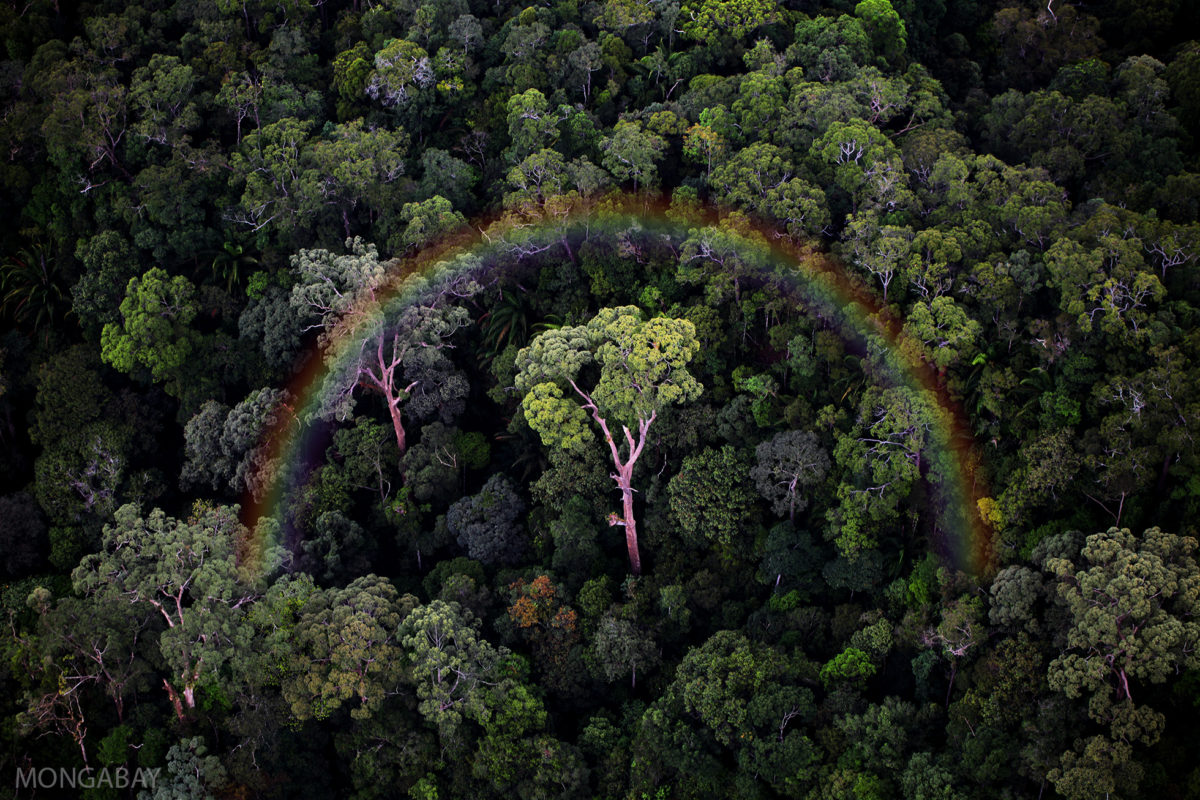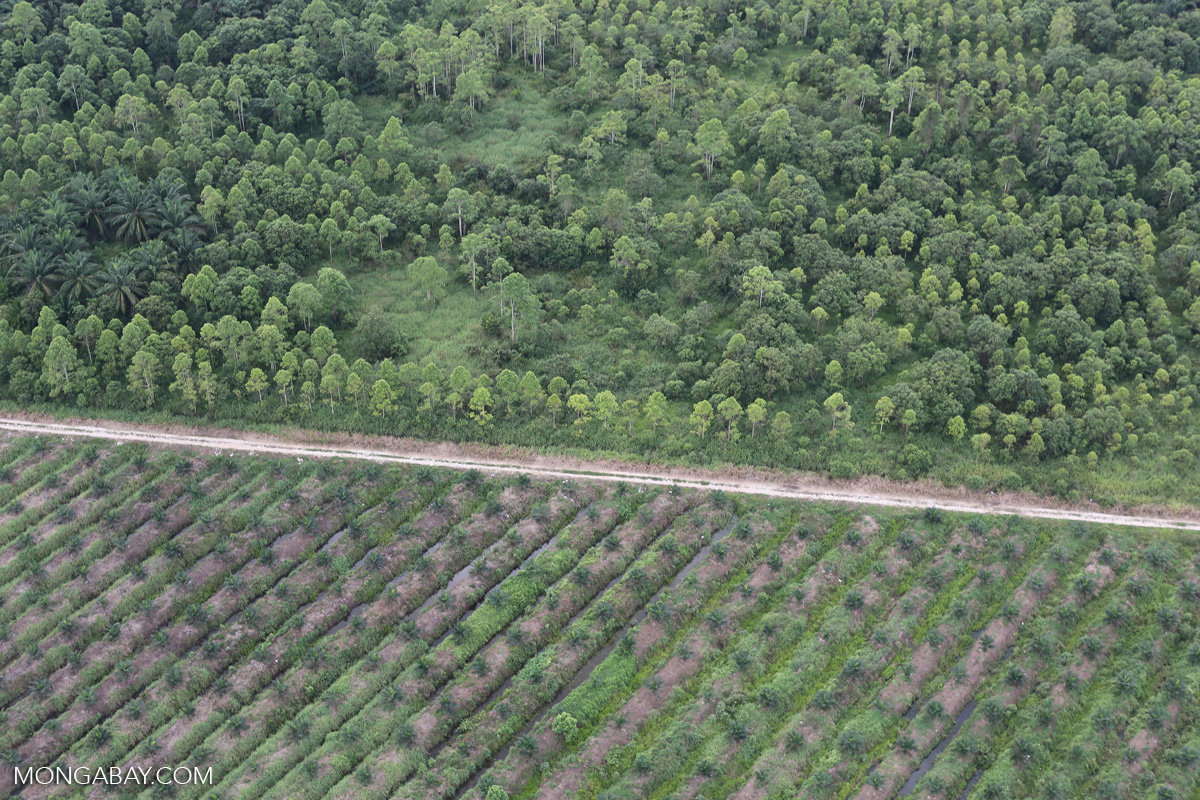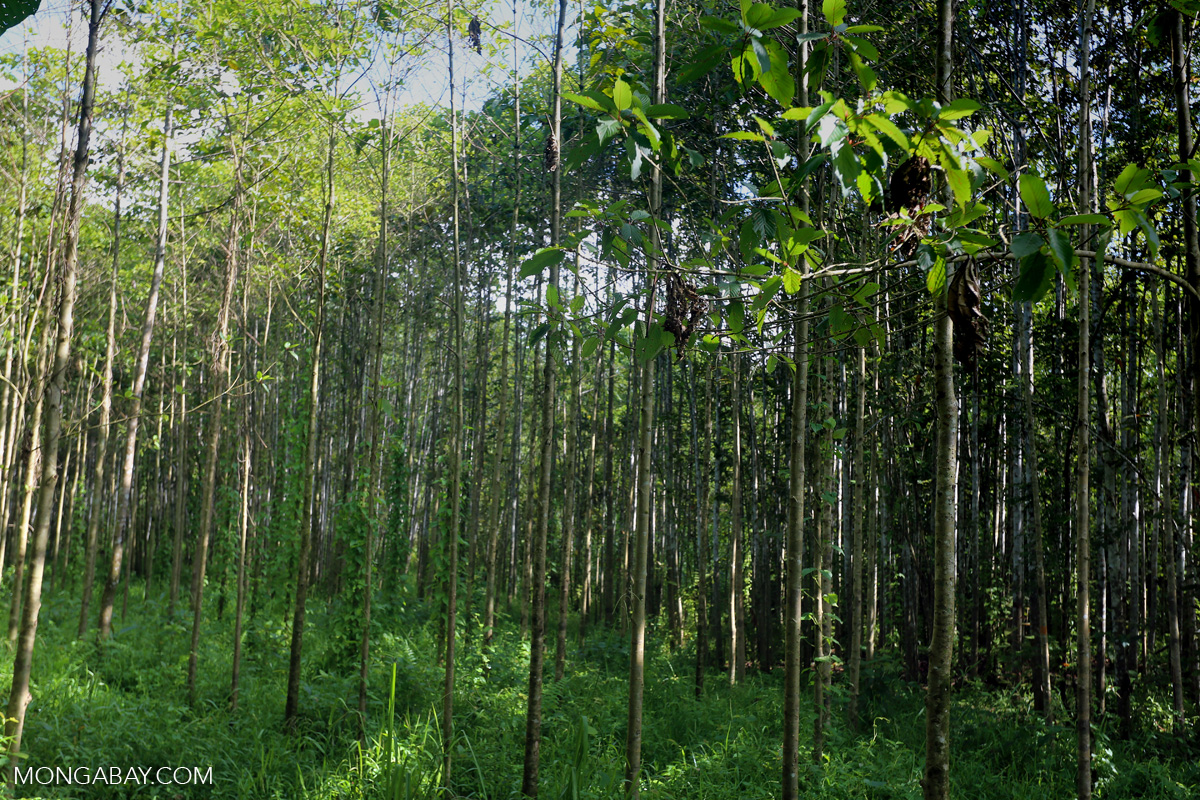- From providing clean air and water to temperature regulation, degraded tropical forests provide ecosystem services valued by Indigenous communities in Malaysia, according to new research.
- Researchers found the ecosystem services most highly prioritized by communities also tended to be ecologically valuable ones, highlighting common interests between Indigenous groups and conservation that can be tapped through community-based projects.
- The study comes amid a government-led push to convert hundreds of thousands of hectares of degraded forests in Sabah into timber plantations.
- Forests, even logged ones, provide unique services tied to Indigenous culture, such as hunting activities, that cannot be replaced by timber plantations, researchers said.
They may be labeled “degraded,” but forests that have been logged, or are otherwise no longer pristine due to human activity, can still provide immense value. According to new research in Malaysian Borneo, degraded tropical forests regulate the surrounding temperature, filter pollutants from air and water, and otherwise provide benefits valued by local communities.
Listen to an audio reading of this article here:
The study, published in Environmental Science & Policy, surveyed 80 respondents from three Indigenous villages in Tongod district, Sabah state, living near degraded forests. It quizzed them about the ecosystem services — the benefits to humans provided by nature — that they thought were the most important.
From hunting to wind protection to being a source of medicinal plants, the study found villagers tended to prioritize ecosystem services differently based on their age, gender, job, ethnicity, and distance from the logged forest.
But across all respondents, there were five core ecosystem services ranked as most important: clean water, clean air, temperature regulation, prevention of erosion, and prevention of flooding, the researchers highlighted.

Unlike services like hunting or being a source of timber products or medicinal plants, which do not necessarily add to the health of the forest, these five services are ecologically valuable, Nastasia Boul Lefeuvre, first author of the study and a researcher at ETH Zürich in Switzerland, told Mongabay in an interview.
“I was just mind-blown,” Boul Lefeuvre said. “What we hear a lot in conservation is that local people’s perspective and valuation of forests is drastically different than what we find in science … we hear a lot about competing interests, and conflict, and the need to find compromises.
“But there was a very clear match on the five ecosystem services which were most important for community members, and which had ecological value. We can clearly see common interests here.”
A forest ‘can absolutely not be replaced by a timber plantation’
The study comes amid a push by the Malaysian authorities to convert some 600,000 hectares (1.5 million acres) of degraded forests in Sabah into timber plantations.
Proponents argue that the logging and establishment of plantations would help accelerate development and provide jobs for local communities. Boul Lefeuvre said the study showed the villagers would rather preserve their forests, even degraded ones.
Timber plantations can also provide communities with core ecosystem services such as regulating temperature and filtering air and water. But compared with forests, they consist of fewer, mostly commercially valuable species, and are therefore unable to provide these services to the extent that a biodiverse forest can.

“There’s also the way Indigenous people relate to their land and to the forest,” Boul Lefeuvre added. “Their traditional way of life is clearly interconnected to the forest, which results in cultural services like hunting that can absolutely not be replaced by a timber plantation.
“If it were about job opportunities, I would have bet that the younger generation [of respondents] would have cared less about [services such as] wildlife habitat and inheritance, and more about economic opportunity,” she said.
Instead, survey results showed younger respondents, aged 18 to 50, actually assigned higher priorities to these services compared with the older generation, aged 51 to 83.
“What’s happened is that the younger generation has really felt, over the past 20 years, drastic change, especially in decreasing biodiversity around the land because it’s been degraded,” Boul Lefeuvre said. “There’s also been more research about the climate crisis, and loss of biodiversity, and the younger generation are way more globalized and [educated] on these issues.”
Engage local communities in designing conservation policies
The results show a need to engage Indigenous communities, especially the younger generation, in designing conservation policies for degraded forests in Sabah, Boul Lefeuvre said.
“You can clearly see different communities and people each having their own interests. So what matters most is going directly to them and asking what they want,” she said. “If you are able to listen to people, and empower them, then there’s a much higher chance of community-based projects being successful.”
In Sabah, the MESCOT KOPEL ecotourism project in the Lower Kinabatangan region is one example of communities and government agencies collaborating to restore degraded floodplain forests while attracting volunteers and visitors for jungle trekking, river cruising, birding, caving and other outdoor activities.

Agroforestry models where commercially valuable tree species or cash crops are coupled with edible native plants would also enable villagers to preserve their traditional way of life while receiving additional income, Boul Lefeuvre said.
In recent years, as the climate crisis has intensified, nature-based solutions such as payment for ecosystem services, and conservation and carbon sequestration agreements, have also proliferated. However, Boul Lefeuvre cautioned, these projects haven’t always been carried out in consultation with local communities.
Last year, Sabahan leaders signed a conservation agreement with a group of foreign companies involving more than 2 million hectares (4.9 million acres) of protected forest for carbon offsets. Civil society and Indigenous groups said negotiations did not meaningfully involve those living in and around the forests.
To truly benefit local communities and be sustainable, conservation projects should consult Indigenous groups instead of taking a top-down approach, Boul Lefeuvre said, adding that the study showed a “very clear overlap” between ecosystem services prioritized by Indigenous communities and services of ecological value.
“Science and traditional knowledge are clearly capable of working together,” she said. “Projects should be defined and designed with local communities, not dumped down on them.”
Banner image of deforestation for a plantation in the Malaysian Borneo by Rhett A. Butler/Mongabay.
Citations:
Gamfeldt, L., Snäll, T., Bagchi, R., Jonsson, M., Gustafsson, L., … Bengtsson, J. (2013) Higher levels of multiple ecosystem services are found in forests with more tree species. Nature Communications, 4(1340). doi:10.1038/ncomms2328
Boul Lefeuvre, N., Keller, N., Plagnat-Cantoreggi, P., Godoong, E., Dray, A., & Philipson, C. D. (2021) The value of logged tropical forests: A study of ecosystem services in Sabah, Borneo. Environmental Science & Policy, 128, 56-67. doi:10.1016/j.envsci.2021.11.003
FEEDBACK: Use this form to send a message to the author of this post. If you want to post a public comment, you can do that at the bottom of the page.
